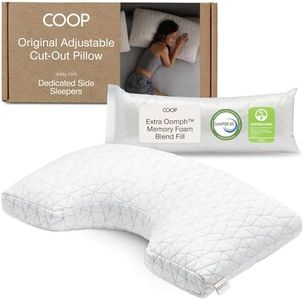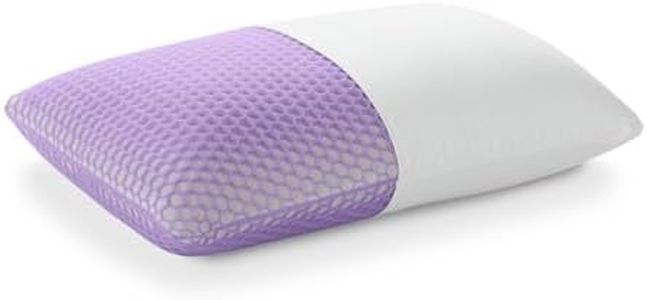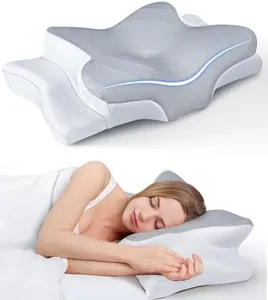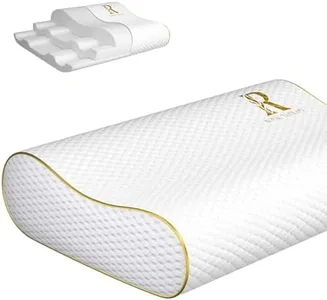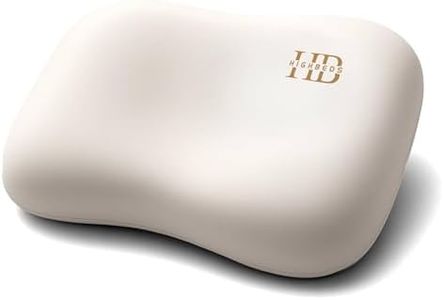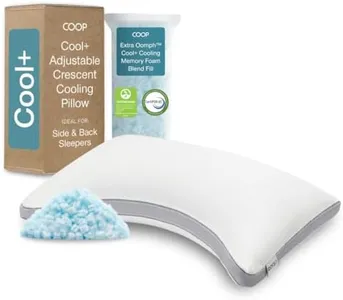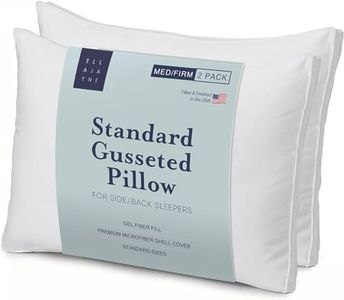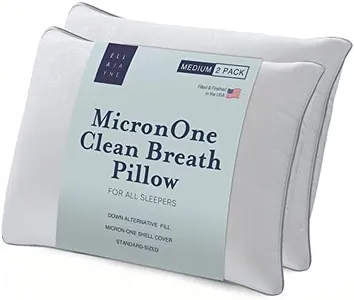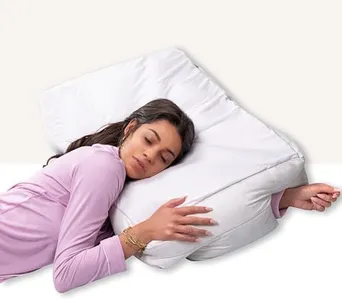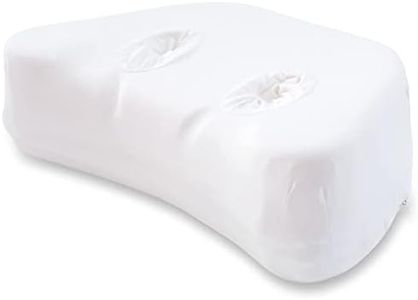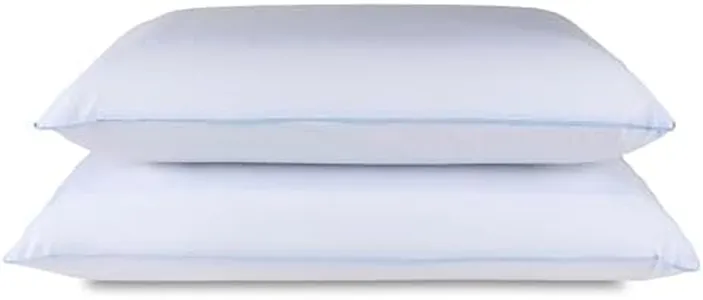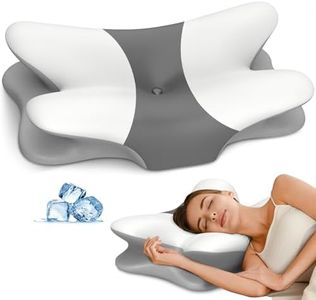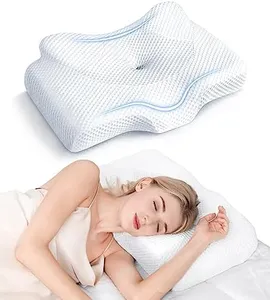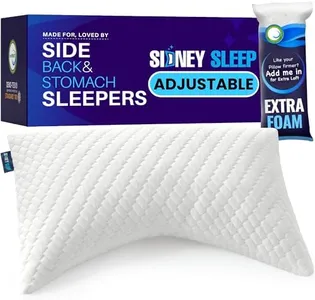10 Best Side Sleeper Pillows 2025 in the United States
Our technology thoroughly searches through the online shopping world, reviewing hundreds of sites. We then process and analyze this information, updating in real-time to bring you the latest top-rated products. This way, you always get the best and most current options available.

Our Top Picks
Winner
Purple Harmony Pillow - Standard Tall, Greatest Pillow Ever Invented, 360º Hex Grid & Talalay Latex Core - No Pressure Support, Stays Cool, Luxurious Comfort
Most important from
6472 reviews
The Purple Harmony Pillow is a tall, plush pillow designed to provide gentle support without pressure, making it a good option for side sleepers who prefer a softer feel. With a loft of about 7.5 inches, it helps keep your head and neck aligned while you sleep on your side. The pillow features a unique combination of a breathable GelFlex honeycomb layer and a Talalay latex core, which work together to offer support while staying cool through the night. This airflow and moisture-wicking cover make it especially comfortable if you tend to get warm when sleeping.
The rectangular shape and plush firmness suit those who want cushioning but still need proper neck support. However, the pillow is not adjustable, so you can’t add or remove fill to customize the height or firmness. While it maintains its shape well over time thanks to durable materials, side sleepers who need firmer support or more personalized loft might find it less ideal.
On the plus side, it’s hypoallergenic and easy to clean with a machine-washable cover, which is great for sensitive sleepers. Taking all factors into consideration, the Purple Harmony Pillow is well-suited for side sleepers wanting a cool, plush, and durable option but may not work if you need a firmer or adjustable pillow.
Most important from
6472 reviews
Ultra Pain Relief Cooling Pillow for Neck Support, Adjustable Cervical Pillow Cozy Sleeping, Odorless Ergonomic Contour Memory Foam Pillows, Orthopedic Bed Pillow for Side Back Stomach Sleeper
Most important from
8014 reviews
The Cozyplayer Ultra Pain Relief Cooling Pillow is designed with side sleepers in mind, especially those who wake up with neck pain. Its unique hollow concave shape and six contour zones support your head, neck, shoulders, and arms, helping keep your spine aligned. The pillow height is adjustable by flipping or removing an insert, allowing you to find the right loft for your comfort.
Made from breathable memory foam and paired with a cooling pillowcase that lowers skin temperature, it aims to keep you comfortably cool throughout the night. The firmness is medium-firm, providing both support and softness without feeling too hard. The pillow is rectangular and ergonomic, made to relieve pressure points common for side sleepers. Some users might notice a slight memory foam odor initially, but airing it out helps. Also, the contour design might take a few nights to get used to, which is normal.
The pillow is easy to care for since the cover is machine washable. If you often suffer from neck stiffness or want better spinal alignment during sleep, this pillow offers thoughtful features like cooling, adjustability, and orthopedic support. However, if you prefer a very soft or traditional pillow shape, this might feel unusual at first. The 100-night trial helps you test if it suits your personal sleep needs.
Most important from
8014 reviews
Tempur-Pedic TEMPUR-Ergo Neck Pillow, Large Profile, White
Most important from
7562 reviews
The Tempur-Pedic TEMPUR-Ergo Neck Pillow is designed with side sleepers in mind, featuring a large, high-profile shape (about 4.75 inches tall) that helps keep your head and neck properly aligned. Its extra-firm feel comes from the signature TEMPUR material, which molds to your body to relieve aches while maintaining firm support throughout the night. This firmness can be great if you prefer strong neck support but might feel too stiff for those who like a softer pillow.
The pillow's rectangular shape is tailored to follow the natural curve of your neck and shoulders, enhancing comfort for both side and back sleepers. It uses copper gel-infused memory foam, which supports cooling better than traditional memory foam, though it might not be as breathable as natural fibers or pillows with air channels. The cover is hypoallergenic, machine washable, and made of polyester knit, making maintenance simple and allergy-friendly. However, the pillow does not offer adjustability in loft or firmness, so your comfort depends on whether the extra-firm, high-profile design fits your preference and sleeping style. Weighing just over 4 pounds, it is reasonably portable but best suited for home use.
Backed by a 5-year limited warranty and CertiPUR-US certification, this pillow promises durability and safety. If you’re a side sleeper looking for firm support and neck alignment with a shape designed to cradle your head and shoulders, this pillow is a solid choice, though those needing softer or adjustable options may want to explore other models.
Most important from
7562 reviews
Buying Guide for the Best Side Sleeper Pillows
Choosing the right pillow as a side sleeper is incredibly important for your comfort, spinal alignment, and overall sleep quality. Side sleepers typically need a pillow that fills the space between the head and the mattress to keep the neck straight and avoid stiffness or pain. When shopping, pay close attention not just to feel, but also key features that affect support and durability. Understanding what each specification means can help you narrow down the best options for your unique preferences and body type.FAQ
Most Popular Categories Right Now
